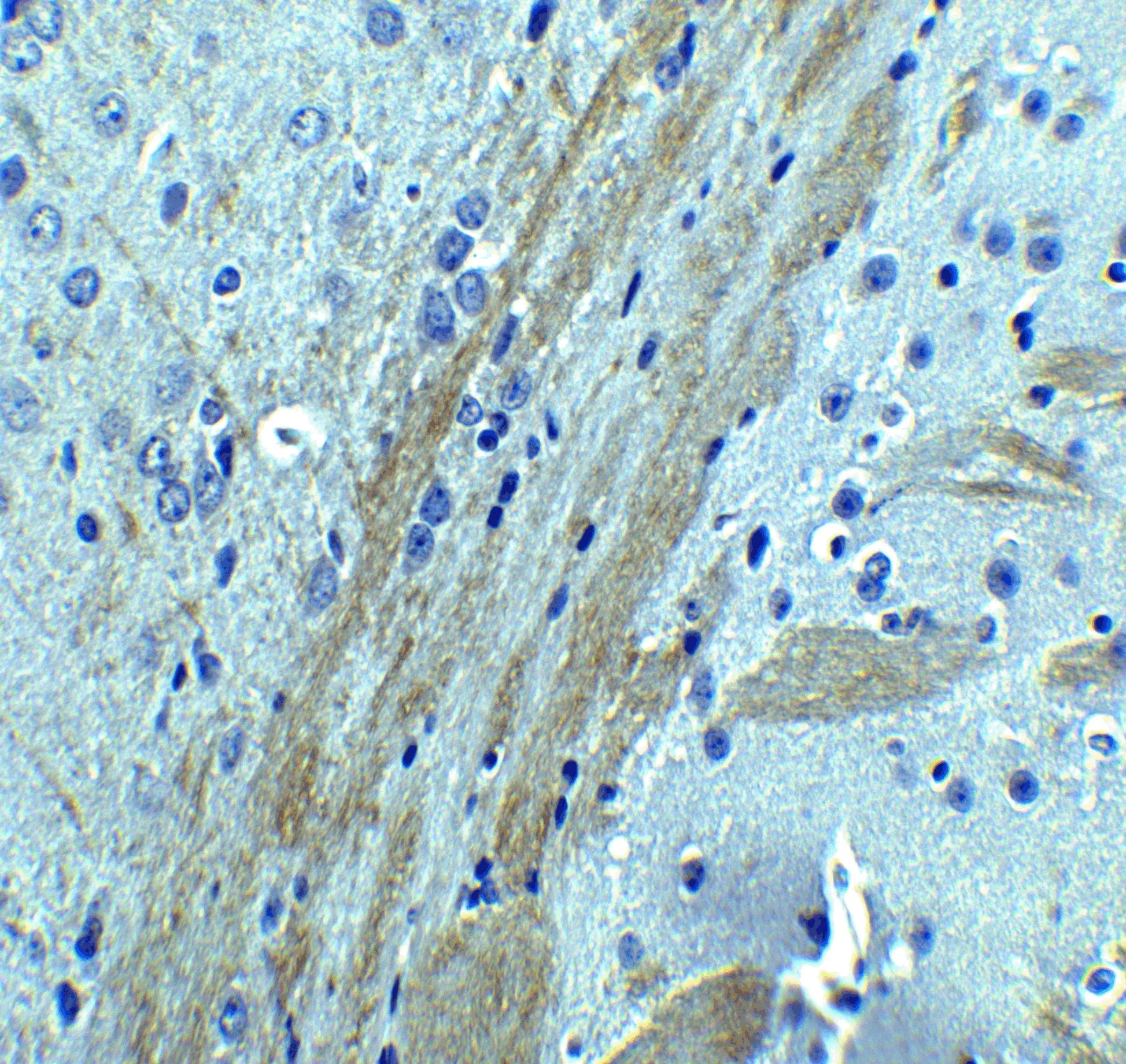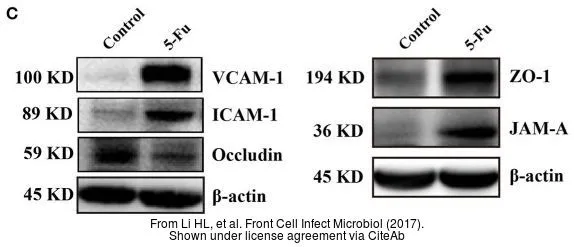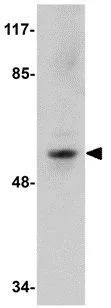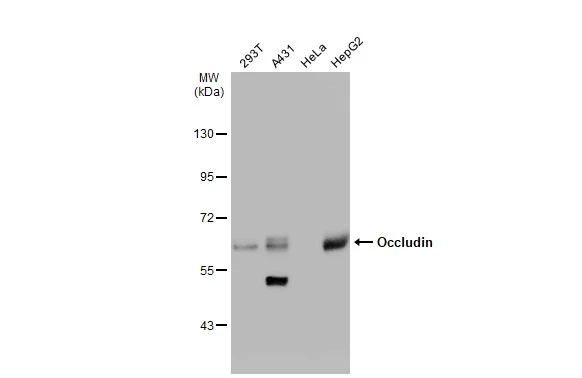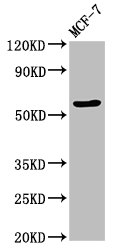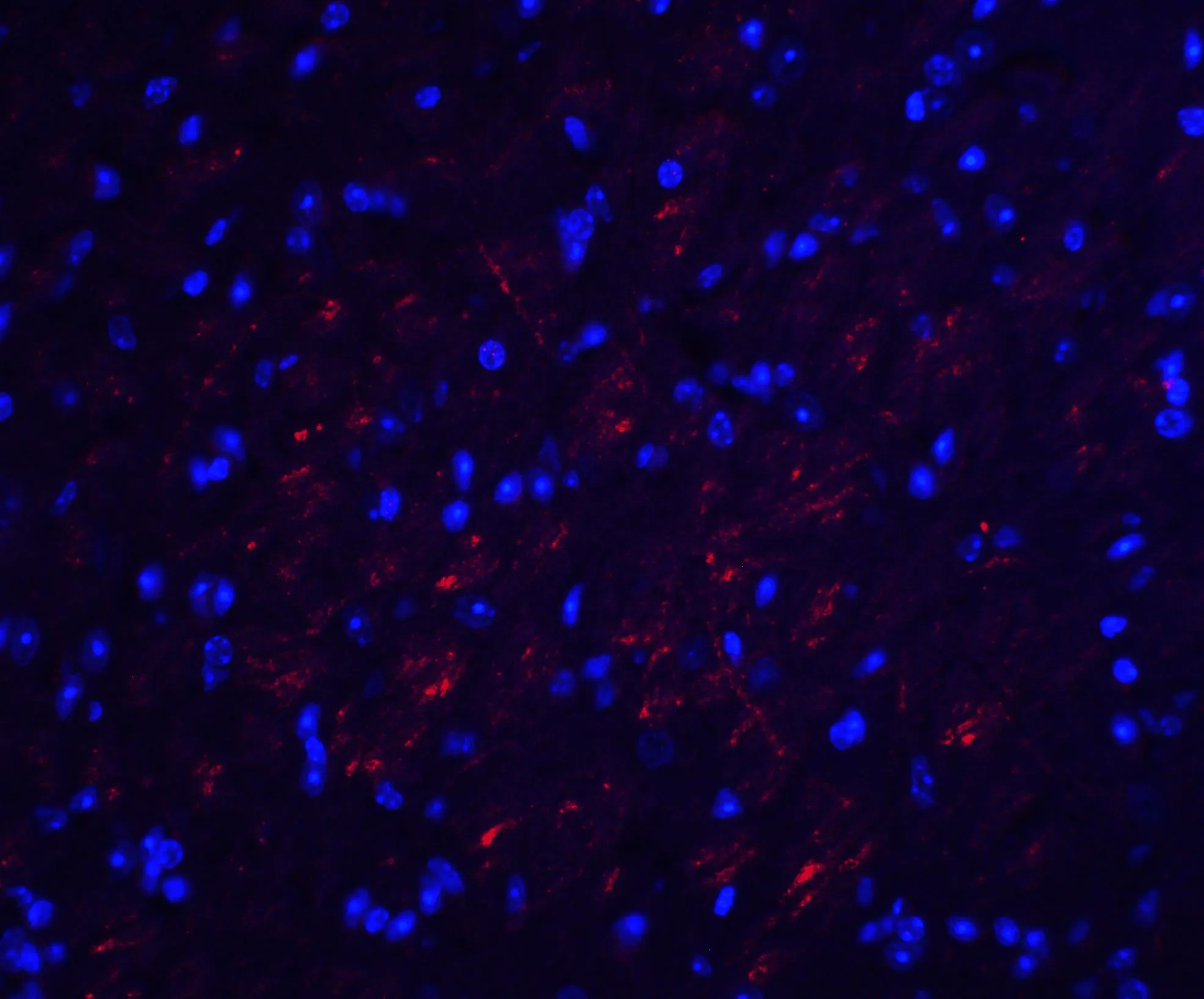
IHC-P analysis of mouse brain tissue using GTX85016 Occludin antibody. Red : Primary antibody Blue : DAPI Dilution : 20 microg/ml
Occludin antibody
GTX85016
ApplicationsWestern Blot, ELISA, ImmunoHistoChemistry, ImmunoHistoChemistry Paraffin
Product group Antibodies
TargetOCLN
Overview
- SupplierGeneTex
- Product NameOccludin antibody - Orthogonal Validated
- Delivery Days Customer9
- Application Supplier NoteWB: 1 microg/mL. *Optimal dilutions/concentrations should be determined by the researcher.Not tested in other applications.
- ApplicationsWestern Blot, ELISA, ImmunoHistoChemistry, ImmunoHistoChemistry Paraffin
- CertificationResearch Use Only
- ClonalityPolyclonal
- Concentration1 mg/ml
- ConjugateUnconjugated
- Gene ID100506658
- Target nameOCLN
- Target descriptionoccludin
- Target synonymsBLCPMG, PPP1R115, PTORCH1, occludin, phosphatase 1, regulatory subunit 115
- HostRabbit
- IsotypeIgG
- Protein IDQ16625
- Protein NameOccludin
- Scientific DescriptionTight junctions act as a semi-permeable barrier to the transport of ions, solutes, and water and are considered to function as a fence that divides apical and basolateral domains of plasma membranes. Tight junctions coordinate a variety of signaling and trafficking molecules regulating cell differentiation, proliferation, and polarity and contain a number of junctional proteins including Occludin, Claudins, junctional adhesion molecules (JAMs), as well as multiple scaffold proteins. Occludin, the first identified component of tight junction strands, is thought function as a signal transmitter in multiple signaling pathways and can associate with multiple kinases and phosphatases such as PI3-kinase and protein phosphatases 1 and 2A. At least two isoforms of OCLN are known to exist.
- Storage Instruction2°C to 8°C
- UNSPSC12352203
References
- Atorvastatin Attenuates Radiotherapy-Induced Intestinal Damage through Activation of Autophagy and Antioxidant Effects.Read more
- Alteration of Gut Microbiota and Inflammatory Cytokine/Chemokine Profiles in 5-Fluorouracil Induced Intestinal Mucositis. Li HL et al., 2017, Front Cell Infect MicrobiolRead more

